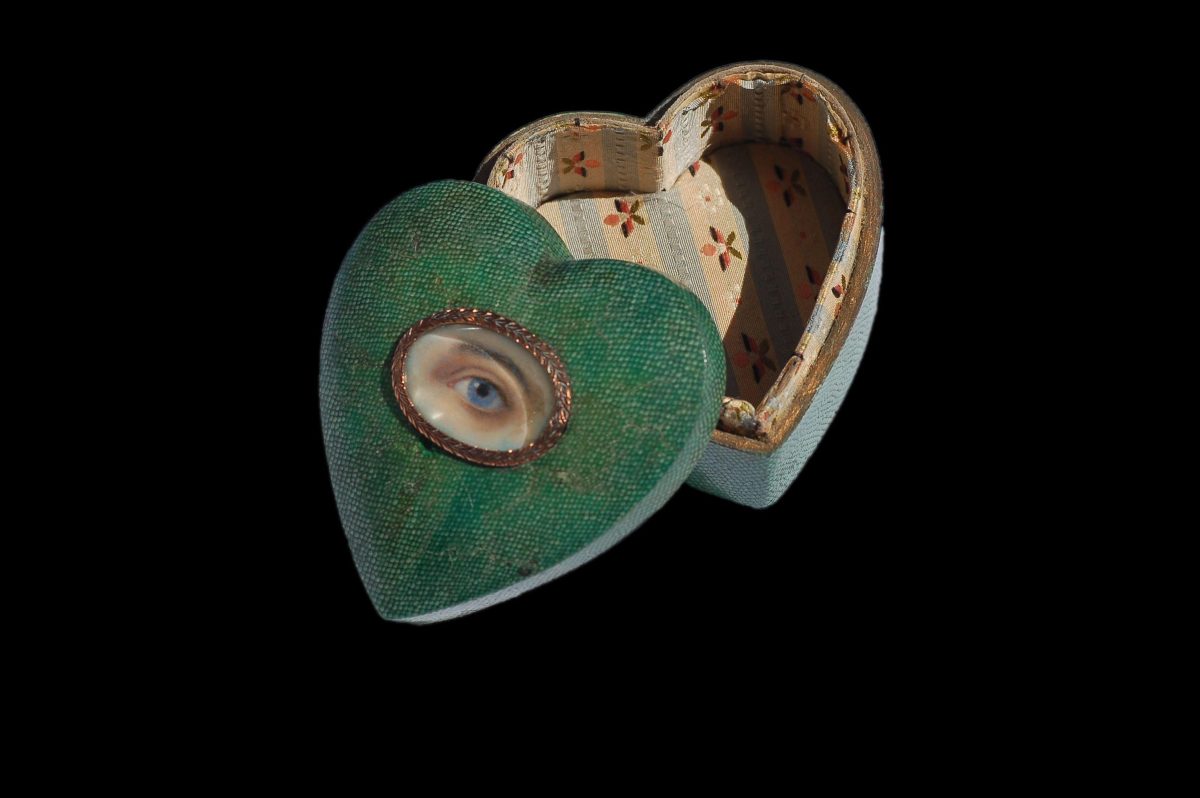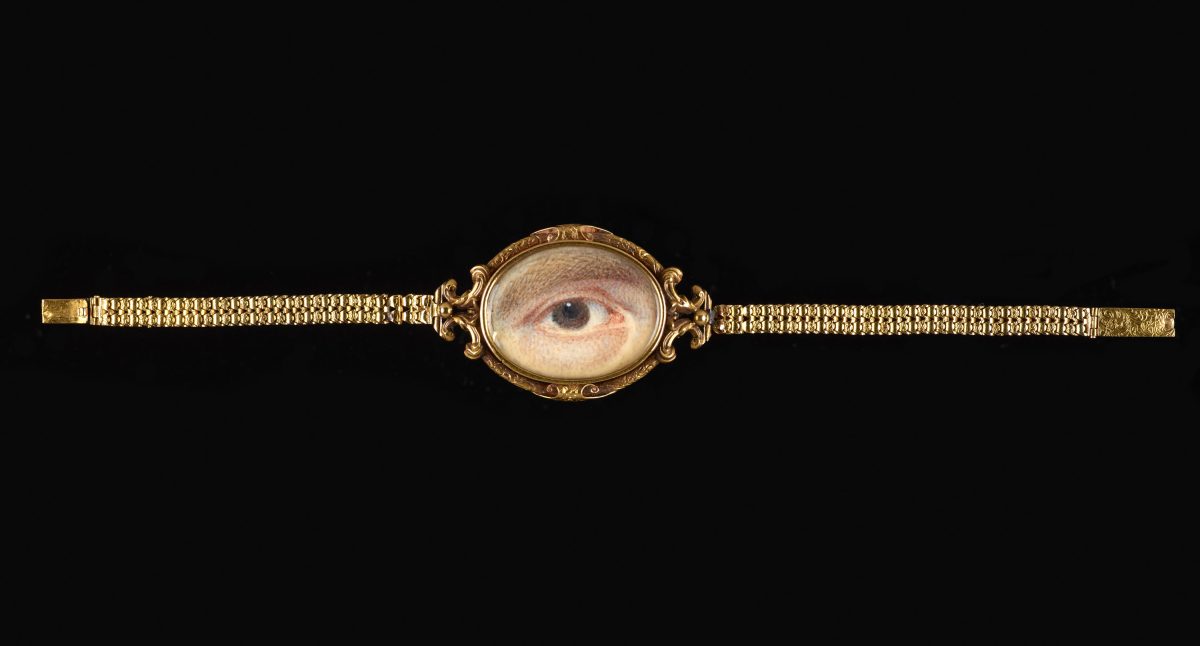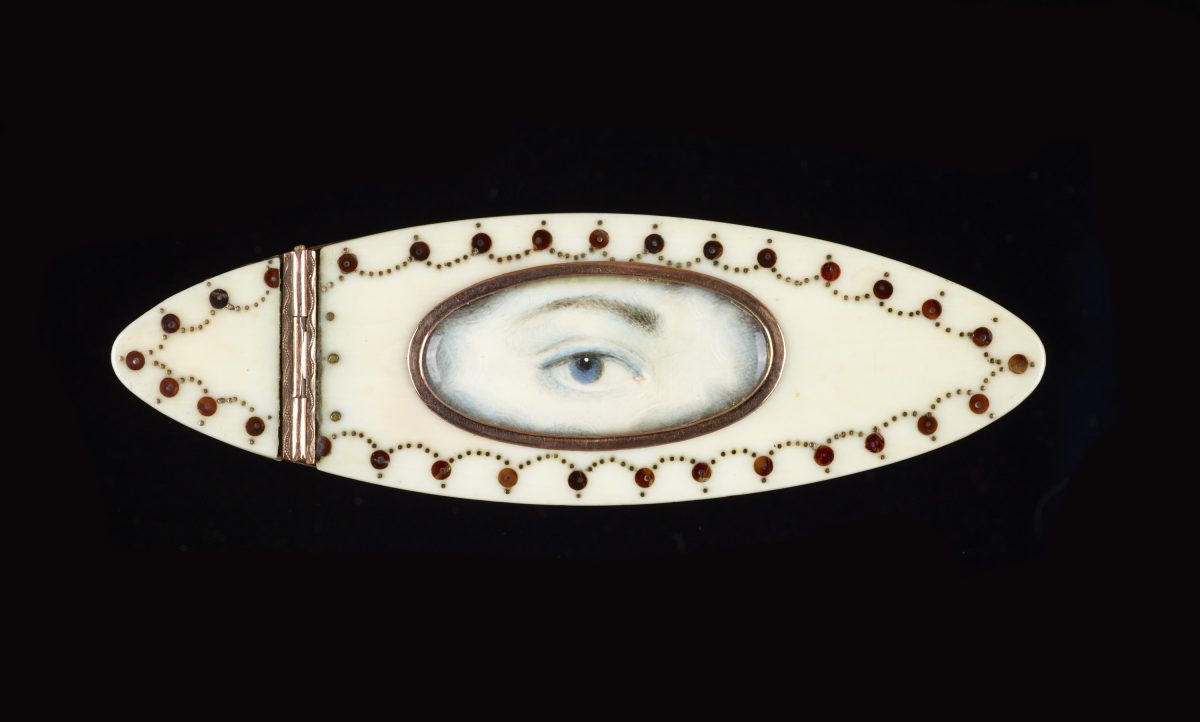
From the moment the Prince of Wales (later, King George IV of England) laid eyes on Maria Firtzherbert at the London opera in 1784, he knew it was love. But Fitzherbert, a Catholic, twice-widowed commoner, knew that British law would never allow their union. She fled to France to escape the future king’s ardor, but Fitzherbert’s absence only inflamed the prince more. In his passion, he sent Fitzherbert a miniature portrait of one of his eyes. She reciprocated with her own eye miniature, and one month later, the two were married in a secret ceremony. The scandalous tale of love at first sight set off a craze for eye miniatures across England that would stretch for nearly four decades.
A new book, Lover’s Eyes: Eye Miniatures from the Skier Collection (D Giles Limited, 2021) edited by Elle Shushan, features a richly illustrated cache of over 130 of these bejeweled, hand-painted treasures. Eye miniatures are typically made of painstakingly detailed watercolors on polished pieces of ivory, and surrounded by carved gems, enameled metals, and human hair. These exquisite, enigmatic objects are frequently unsigned, making the majority unattributable to a single artist, and because they depict only a single eye and sometimes a stray lock or hair or eyebrow, the sitter’s identity is also often obscured. Of course, this mystery was part of the eye miniature’s allure — as it was for the king and his commoner — but it is also perhaps for these reasons that scholars have largely ignored eye miniatures until recent years.

Eye-themed adornments have been around since at least the Etruscan and Roman times, but the Georgian and Victorian version was likely inspired by a mid-18th century “French folly,” as the English politician and art historian Horace Walpole grumbled in 1785. Most lovers’ eyes were worn as jewelry, especially on brooches, lockets, and pendants worn close to the heart. Others decorated small functional boxes and etuis used to hold toothpicks, false beauty marks, and other trinkets. Most eye miniatures were exchanged between lovers, though they were also given to close friends and family members. Others were produced as memorial tokens after a loved one’s death. In this case, the eye is often surrounded by clouds to symbolize the subject’s ascent from earth.

But it wasn’t just the eye itself that carried meaning in these small portraits. An essay by art historian Graham C. Boettcher explains the messages conveyed by the miniatures’ accompanying diamonds, coral, and other gemstones. Pearls, for example, symbolized purity but also tears, and often framed the portraits of the deceased, while garnets represented friendship. Another essay by Shusan details the ways that eye miniature artists utilized the language of flowers, or floriography, in their work. For example, a miniature thought to be the eye of Mary Sarah Fox surrounded by foxgloves may be a play on the sitter’s last name, but could also connect the sitter to the energy, magic, and cunning that the flower was then considered to represent. In addition to eyes, some miniatures also featured locks of the sitter’s hair, another fragment of a beloved body to be captured and cherished by the miniature’s owner forever.
Although the king later abandoned Fitzherbert for a more legitimate marriage, he requested to be buried with her eye miniature placed directly over his heart upon his death. In this way, he took a piece of his lover — and her watchful gaze — with him to the grave. Lover’s Eyes illuminates this and other romances connected to eye miniatures, shining a light on these small but powerful portraits.






Lover’s Eyes: Eye Miniatures from the Skier Collection, edited by Elle Shushan and published by D Giles Limited, is available on Bookshop.
0 Commentaires